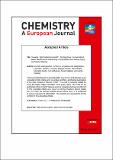Files in this item
Towards high performance metal–organic framework - microporous polymer mixed matrix membranes : addressing compatibility and limiting aging by polymer doping
Item metadata
| dc.contributor.author | Sabetghadam, Anahid | |
| dc.contributor.author | Liu, Xinlei | |
| dc.contributor.author | Orsi, Angelica | |
| dc.contributor.author | Lozinska, Magdalena | |
| dc.contributor.author | Johnson, Timothy | |
| dc.contributor.author | Jansen, Kaspar | |
| dc.contributor.author | Wright, Paul | |
| dc.contributor.author | Carta, Mariolino | |
| dc.contributor.author | Mckeown, Neil | |
| dc.contributor.author | Kapteijn, Freek | |
| dc.contributor.author | Gascon, Jorge | |
| dc.date.accessioned | 2019-08-07T23:41:20Z | |
| dc.date.available | 2019-08-07T23:41:20Z | |
| dc.date.issued | 2018-08-08 | |
| dc.identifier | 253462766 | |
| dc.identifier | 5b23f133-c7d4-44c1-a69a-e33181aef693 | |
| dc.identifier | 85052685307 | |
| dc.identifier | 000443382500009 | |
| dc.identifier.citation | Sabetghadam , A , Liu , X , Orsi , A , Lozinska , M , Johnson , T , Jansen , K , Wright , P , Carta , M , Mckeown , N , Kapteijn , F & Gascon , J 2018 , ' Towards high performance metal–organic framework - microporous polymer mixed matrix membranes : addressing compatibility and limiting aging by polymer doping ' , Chemistry - A European Journal , vol. In Press . https://doi.org/10.1002/chem.201803006 | en |
| dc.identifier.issn | 0947-6539 | |
| dc.identifier.other | crossref: 10.1002/chem.201803006 | |
| dc.identifier.other | ORCID: /0000-0002-4243-9957/work/62668275 | |
| dc.identifier.uri | https://hdl.handle.net/10023/18267 | |
| dc.description | The authors gratefully acknowledge the financial support from the European Research Council under the European Union’s Seventh Framework Programme (FP/2007-2013), M4CO2 project (608490). | en |
| dc.description.abstract | Membrane separation for gas purification is an energy‐efficient and environment‐friendly technology. However, the development of high performance membranes is still a great challenge. In principle, mixed matrix membranes (MMMs) have the potential to overcome current materials limitations, but in practice there is no straightforward method to match the properties of fillers and polymers (the main components of MMMs) in such a way that the final membrane performance reflects the high performance of the microporous filler and the processability of the continuous polymer phase. This issue is especially important when high flux polymers are utilized. In this work, we demonstrate that the use of small amounts of a glassy polymer in combination with high performance PIM‐1 allow for the preparation of MOF based MMMs with superior separation properties and low aging rates under humid conditions, meeting the commercial target for post‐combustion CO2 capture. | |
| dc.format.extent | 1528462 | |
| dc.language.iso | eng | |
| dc.relation.ispartof | Chemistry - A European Journal | en |
| dc.subject | Membranes | en |
| dc.subject | Microporous polymer | en |
| dc.subject | Metal-organic frameworks | en |
| dc.subject | QD Chemistry | en |
| dc.subject | NDAS | en |
| dc.subject.lcc | QD | en |
| dc.title | Towards high performance metal–organic framework - microporous polymer mixed matrix membranes : addressing compatibility and limiting aging by polymer doping | en |
| dc.type | Journal article | en |
| dc.contributor.sponsor | European Commission | en |
| dc.contributor.institution | University of St Andrews. School of Chemistry | en |
| dc.contributor.institution | University of St Andrews. EaSTCHEM | en |
| dc.identifier.doi | https://doi.org/10.1002/chem.201803006 | |
| dc.description.status | Peer reviewed | en |
| dc.date.embargoedUntil | 2019-08-08 | |
| dc.identifier.grantnumber | 608490 | en |
This item appears in the following Collection(s)
Items in the St Andrews Research Repository are protected by copyright, with all rights reserved, unless otherwise indicated.

